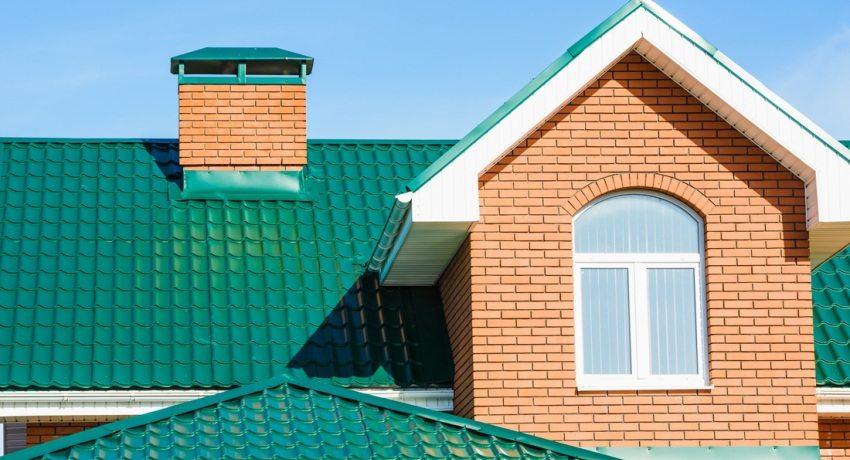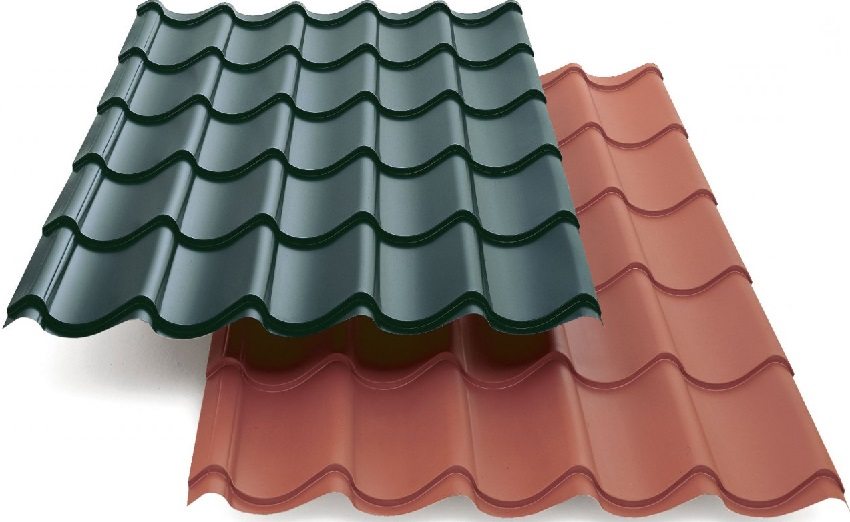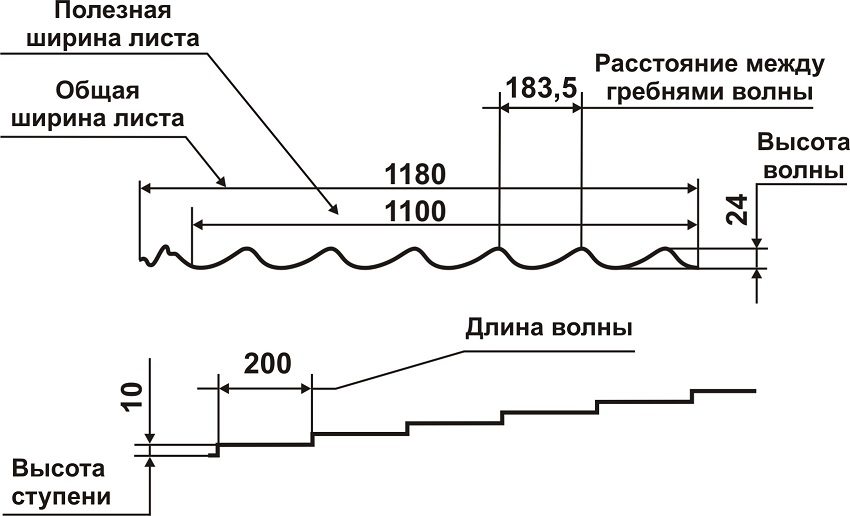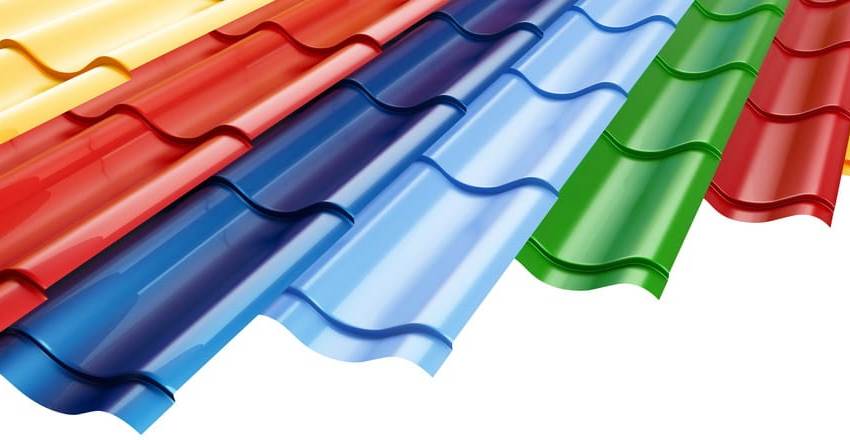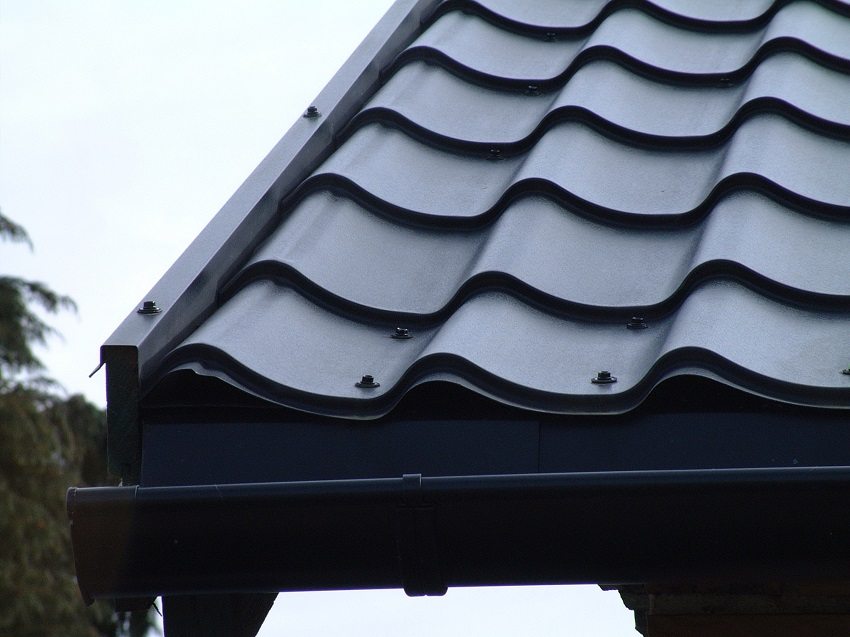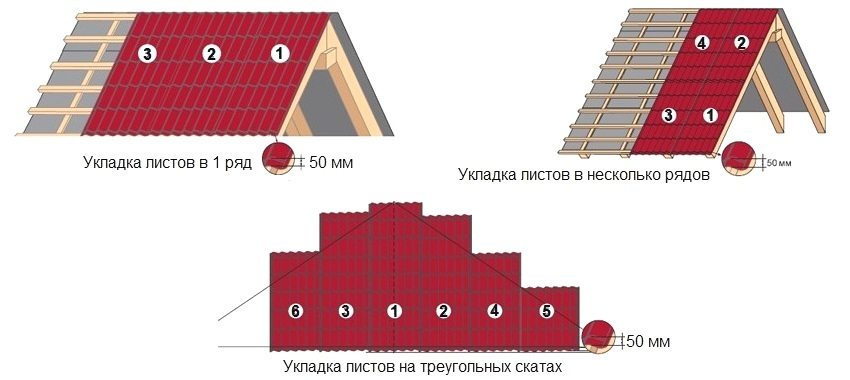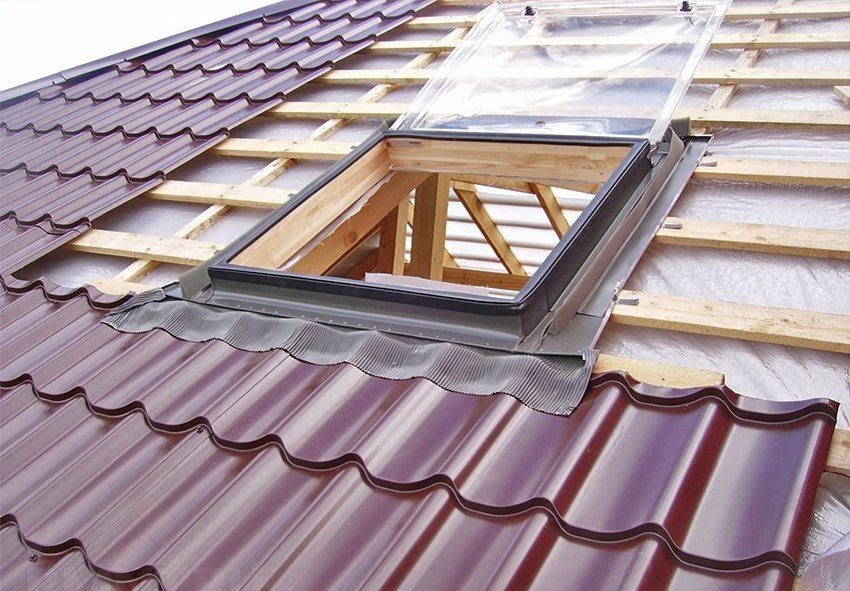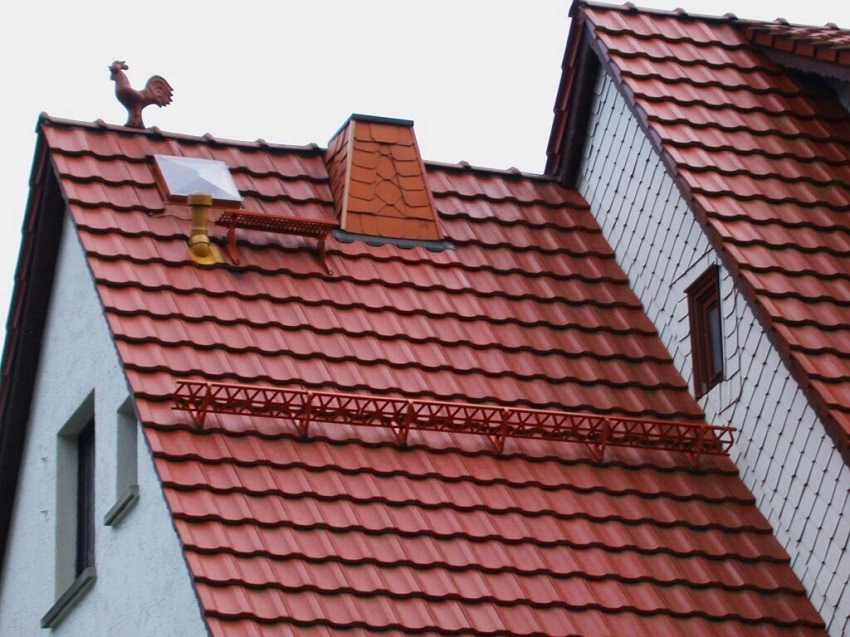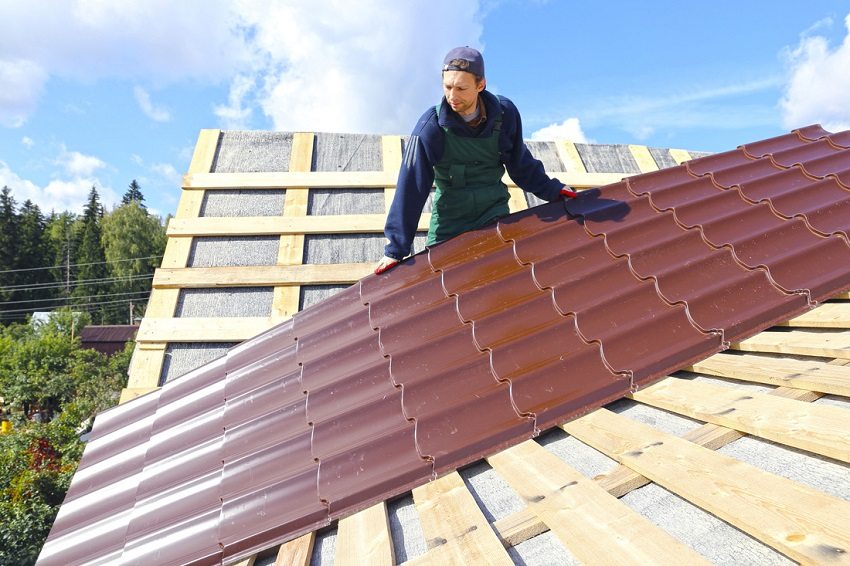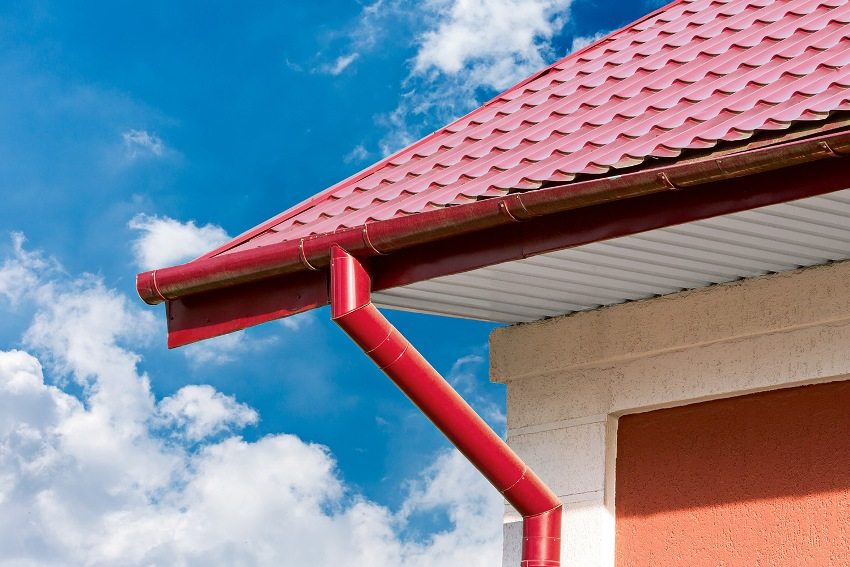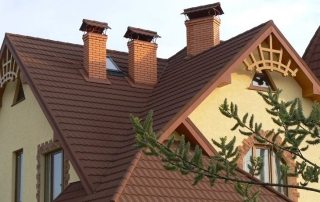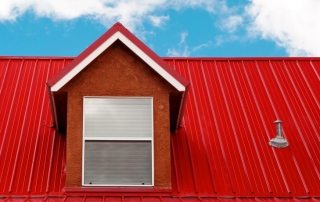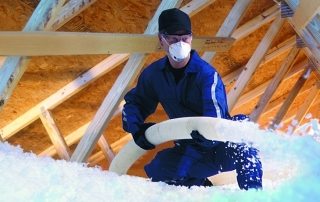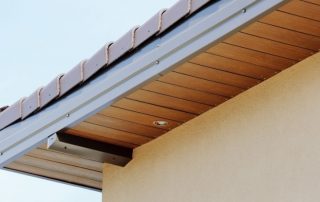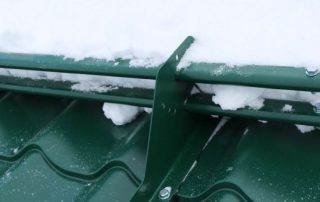Recently, metal tiles have become increasingly popular on the roofing materials market. Roof installation of it is relatively simple, and the performance is high. When choosing this material, an important parameter is the size of a sheet of metal tile for a roof: the price of which may also depend on a number of other factors, such as the type of sheet coating, their shape and many others.
Content
- 1 Things to consider when choosing a sheet size
- 2 What parameters need to be considered in addition to the dimensions of the sheet of metal
- 3 Dependence of the size and price of metal sheets on the features of the models
- 4 Features and purpose of various layers of material
- 5 Sizes of a sheet of metal roofing: price and features of various coatings
- 6 Types of roof slopes and their effect on the size of metal sheets
- 7 Installation of metal roofing
Things to consider when choosing a sheet size
With standard sizes, the price of a sheet of metal roofing is slightly higher than that of slate or roofing sheet, but this is offset by the high performance characteristics of the material. When choosing a sheet, you should understand that its area can be complete or useful. Overall length and width is the distance from one edge to the other. Typically, the length varies from 40 cm to 8 m, and the width is 1.16-1.19 m.
The useful size of the sheet must correspond to the size of the roof, but not be too large, otherwise the process of installing the roof can be significantly complicated. The most convenient width for installation is 1.16 m, and a length of 4.5 m. It should be borne in mind that the sheets of material are overlapped, that is, the edge of one sheet is superimposed on the adjacent one. This is done in order to eliminate the possibility of leakage and increase the life of the entire coating.
The optimal size of metal roofing tiles is full size minus overlaps. In standard cases, the size of the overlap is from 6 to 8 cm in the transverse direction and from 10 to 15 in the longitudinal direction. Also, the size of the overlaps largely depends on the brand of the material you choose.
What parameters need to be considered in addition to the dimensions of the sheet of metal
In addition to the length and width of a sheet of roofing material, a number of important parameters must be taken into account when choosing:
- sheet thickness. This parameter varies from 0.45 to 0.5 mm, with the latter option being the most popular. The thickness is indicated in the parameters declared by the manufacturer, but it is better to check it manually when buying. If you get too thin metal roofing, then it will be quite difficult to transport and install, and it will withstand a small load;
- profile height. The standard height is 1.8-2.5 cm, if you need a sheet of higher or lower height, then its production can be ordered individually;
- wave step. For standard models it is from 35 to 40 cm, but profiles with other characteristics can be made on request.
The most popular among buyers is metal with a small wave height - up to 50 mm. This is due to the fact that it is cheaper than other types of profiles and easier to install. If the wave height exceeds 50 mm, then such sheets are considered elite and are more expensive than usual.
Helpful advice! The profile wave can also be asymmetrical or symmetrical. The first option is more common and cheaper. Symmetrical wave sheets are not produced by all manufacturers and are several times more expensive.
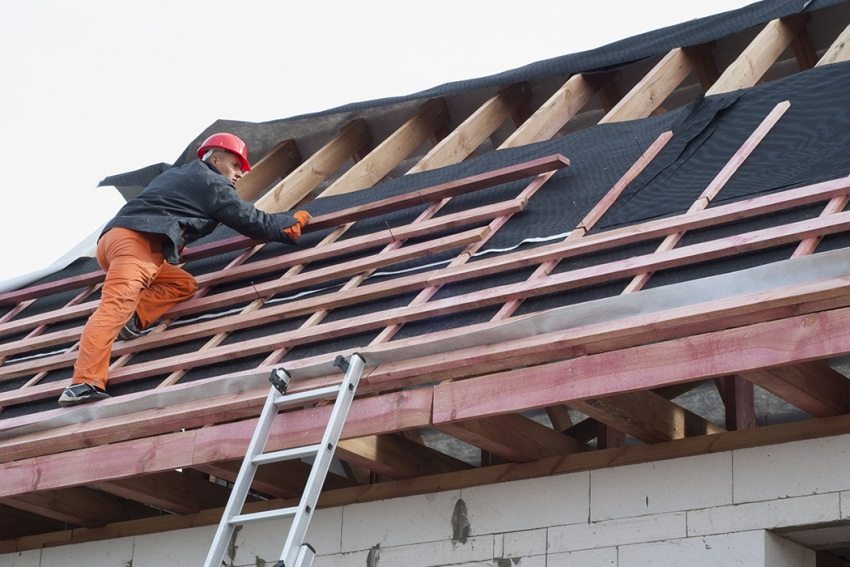
Installation process lathing for metal tiles
Dependence of the size and price of metal sheets on the features of the models
One of the features of the material is that the sheets have a clearly defined top and bottom. This means that it is impossible to turn them over. If your roof is of a complex shape, and you use tiles of complex configuration for roofing, then this feature greatly complicates the installation, and also increases its cost due to a large amount of waste.
If you choose a model with a complex wave configuration, then you should understand that it will not only cost more than the standard one, but its installation will take more time and effort from you. Therefore, if you do not have professional skills in the field of roofing, it is better to choose a simpler and cheaper option. Photos of a roof made of metal tiles show that it looks good even if you install the most ordinary roofing material without frills.
If you want to understand what the already mounted material will look like on your roof, then you should visit specialized stands where manufacturers demonstrate ready-made pieces of the roof.
Features and purpose of various layers of material
When choosing the size of a sheet of metal tile for a roof, it should be borne in mind that the material itself consists of several layers, each of which has its own special purpose:
- zinc layer - protects sheets of metal tiles from corrosion, high humidity and other types of negative influences;
- polymer layer - gives the sheet of material the necessary color, acts as an additional protection against external influences. In the photo, the color of metal tiles depends on the top polymer coating.
- passivating layer - prevents static electricity from accumulating on sheets of roofing material;
- primer layer - serves as the basis for applying a polymer coating.
Choosing a polymer-coated roofing material, you get a guarantee of durability for 10-15 years, and with the right montage and care and for a longer period.
Sizes of a sheet of metal roofing: price and features of various coatings
Common sizes of sheets of metal tiles are summarized in the table:
| Size (length x width), mm | Length overlap, mm | Overlap in width, mm |
| 705x1190 | 45 | 5 |
| 3600/2200/1150 / 450х1185 | 100 | 85 |
| 3620/2220/1170 / 470х1140 | 120 | 90 |
| 3620/2220/1170 / 470х1160 | 120 | 60 |
| 3620/2220/1170 / 490х1160 | 120 | 80 |
| 3630/2230/1180 / 480х1180 | 130 | 80 |
| 3630/2230/1180 / 480х1190 | 130 | 90 |
| 3650/2250 / 850х1153 | 150 | 28 |
| 3650/2250/1200 / 500х1190 | 150 | 90 |
Different manufacturers of roofing materials use different materials to create the top layer of shingles:
- pural is a relatively new coating option based on polyurethane. With a thickness of only 50 microns, the material boasts a high level of resistance to temperature changes, mechanical stress and corrosion.Pural roofing tiles are usually used when the roof has to withstand very high or very low temperatures;
- polyester - based on polyester glossy paint, characterized by a thickness of 25 microns. Among its advantages, one can single out a stable, saturated color that does not fade in the sun, and the possibility of installation and operation under any environmental conditions. In addition, the polyester coating has the lowest price per square meter for metal tiles;
- matt polyester - the same as the previous version, but with a matte sheen and a slightly greater thickness - 35 microns. Also characterized by color stability and by maintaining a high level of performance under all environmental conditions. If you choose between matte and glossy metal tiles - which is better, then the choice here depends solely on your individual preferences in terms of roof design;
- PVDF is a glossy finish made up of 80% polyvinyl fluoride and 20% acrylic. Its thickness is 27 microns, and its main advantage is a high level of resistance to ultraviolet radiation and aggressive media. Tiles with such a coating are good for installing the roof of a house, for example, on the seaside. In addition, the PVDF coating is self-cleaning and can be installed not only on the roof, but also on the walls. Most often, metal tiles with such a coating are available in metallic color and boast color stability and durability;
- Plastisol is the thickest version of the polymer coating, its thickness is 200 microns. The material is based on polyvinyl chloride, and its main advantage is the highest level of resistance to mechanical and atmospheric influences in comparison with others. The only drawback of plastisol is that when heated, it can fade and burn out, therefore, when installing in hot climates, it is recommended to use light-colored sheets.
Helpful advice! The main criterion for choosing a polymer coating option for sheets is environmental conditions.
Price per square meter of Ruukki metal tile:
| Profile type | Steel thickness, mm | Coating | Price, rubles |
| Decorrey | 0,45 | Polyester | 498 |
| Finnera | 0,5 | Purex | 567 |
| Finnera plus | 695 | ||
| Monterrey | Polyester | 450 | |
| Purex | 493 | ||
| Pural | 584 | ||
| Pural matt | 584 | ||
| Adamante | Purex | 725 | |
| Armorium | Pural matt | 815 | |
| Elite | 830 |
Types of roof slopes and their effect on the size of metal sheets
The choice of the size of metal roof tiles is also influenced by the type of slope. It can be as follows:
- one- or two-slope roof;
- gable;
- hip;
- attic;
- hipped.
The single-slope version is the simplest in terms of design and is characterized by the least number of parts. A pitched roof does not have a ridge, additional ventilation elements and other unnecessary parts, respectively, when calculating metal tiles for a single-pitched roof, you can count on a minimum amount of waste. It also affects the price of the work.
How much does it cost to cover a shed roof with metal tiles? Significantly cheaper than other roofing options. But the durability of such a roof will be at a height, even if you use the thinnest version, since the load on a pitched roof is less than that of a non-roofing of a different configuration.
For a gable roof, standard size sheets of metal are also suitable. With a gable roof made of metal tiles, photos of houses look very attractive, regardless of the manufacturer of the roofing material or the type of polymer coating. In terms of economy in terms of the material used, this option is slightly more costly than in the case of a pitched roof, but also does not require large financial costs.
Hip roof - one of the most difficult and costly roofing options in terms of using roofing materials. Which is the best metal tile to use in this case depends only on you, but it is worth considering the fact that a sufficiently large amount of material can go to waste due to the complex configuration of the structure.
Installation of metal roofing
Regardless of the size of the sheet, the price for a sheet of metal, the installation of a roof from this material is carried out in a certain sequence and in compliance with a number of important nuances.
Preparatory work
After you have decided on the metal tile - which is better to choose for the roof, you need to make sure that the surface of the roof itself is even. All detected defects must be eliminated, otherwise you risk getting a short-lived structure with low quality hydro and thermal insulation and other performance characteristics.
After all the defects in the roof have been eliminated, it is necessary to measure each of the slopes and the entire roof as a whole. The size and price of metal tiles depend on this.
Helpful advice! Metal tiles as a roofing material should be chosen if the roof slope is at least 14 degrees. Otherwise, it is recommended to give preference to another material.
If there is already some kind of roof covering on the roof, then it must be dismantled. Also, before starting work, you need to remove all prospective ventilation, chimney and other penetrations through the roof. It is highly not recommended to carry out the installation of the material in parallel with the facing work.
Sheets of metal tiles of a standard size must be laid with an overlap of 10 cm. If the length of the slope exceeds 6-7 m, then the sheet should be broken into 2-3 parts.
Sheathing device
The lathing is the base of the metal roofing. Its installation should be carried out in accordance with the following recommendations:
- The pitch between the rafters should not exceed 900 mm. When using metal tiles of a standard size, it is recommended to take rafters with a cross section of 150x50 mm, boards - 100x25 mm.
- The first sheathing board should be nailed strictly along the overhang. At the same time, it should not protrude beyond the cornice, and its thickness should be 10-15 mm more than that of the other boards of the system.
Related article:
Description of the technology for mounting metal tiles on the roof. Features of installation of metal tiles on a complex roof, roofing device.
The size of self-tapping screws for metal tiles is selected depending on the thickness of the material, the type of polymer coating and other parameters.
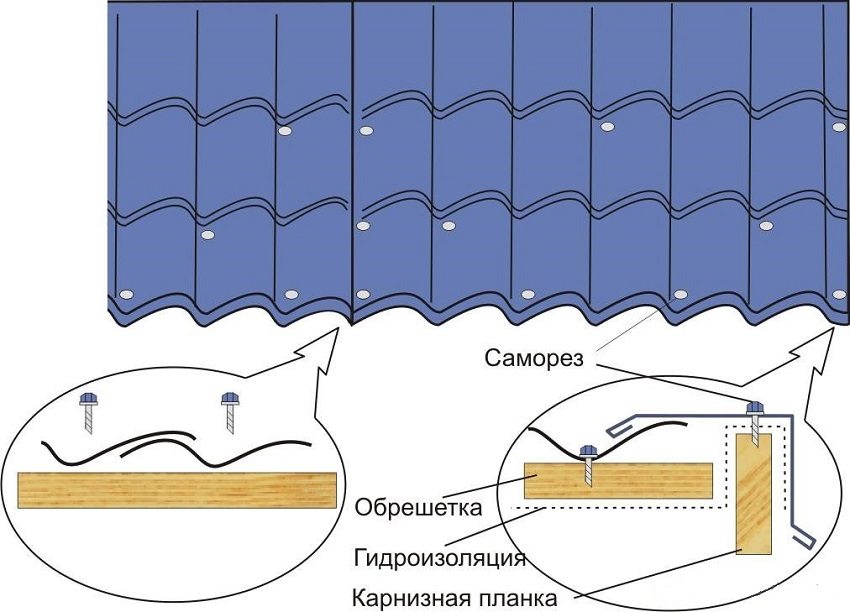
Roof installation diagram using metal roofing and end plates
Arrangement of additional elements
An obligatory element of the roof is a wind and cornice strip, a ridge, a gutter and other additional structural elements. The price of a ridge for metal tiles and other elements depends on the manufacturer and model you choose, and the installation of these elements includes some nuances.
On the sides of the ridge, it is necessary to nail additional boards of the crate, this will ensure greater reliability of its attachment for any working size of the metal tile.
The wind board must be fixed above the sheathing plane by an amount equal to the sheet height. This parameter, like the wave size of the metal tile, depends solely on the manufacturer. The answer to the question of which manufacturer of metal tiles is better to choose depends on your financial capabilities and aesthetic preferences.
In order to equip the drain, before laying the roofing, special brackets must be attached to the bottom board of the sheathing, on which the gutter will then be mounted.The optimal distance between the brackets is 50-60 mm, and the slope of the gutter is 5 mm per linear meter.
Cutting sheets and laying metal tiles
Sheets of material are cut using special chopping shears. It is not recommended to use a grinder for this, since the surface of the sheet at the cut site overheats, which leads to deformation and peeling of the protective layer.
Helpful advice! If you plan to lay tiles on a roof with a complex configuration, then it is better to hire a qualified specialist to cut sheets, so you will keep the amount of waste to a minimum.
Laying should start from the edge of the slope, from the right end of the roof. Fastenings should always be carried out in the depressions between the waves, and in the places where the sheets overlap, fastening is made in each groove. In this case, the dimensions of the sheet must be taken into account. For example, the dimensions of the Monterrey metal tile fit the definition of standard ones and do not require much effort during installation.
In the photo, the metal roof tiles always look perfect, but in reality, a lot of effort is needed to achieve this effect. This includes not only correct installation, but also the selection of the size and model of the sheet.
